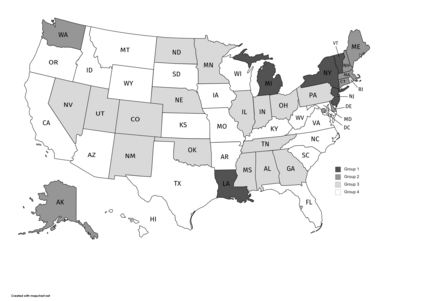We study the allocative challenges that governmental and nonprofit organizations face when tasked with equitable and efficient rationing of a social good among agents whose needs (demands) realize sequentially and are possibly correlated. To better achieve their dual aims of equity and efficiency in such contexts, social planners intend to maximize the minimum fill rate across agents, where each agent's fill rate must be irrevocably decided upon its arrival. For an arbitrarily correlated sequence of demands, we establish upper bounds on both the expected minimum fill rate (ex-post fairness) and the minimum expected fill rate (ex-ante fairness) achievable by any policy. Our bounds are parameterized by the number of agents and the expected demand-to-supply ratio, and they shed light on the limits of attaining equity in dynamic rationing. Further, we show that for any set of parameters, a simple adaptive policy of projected proportional allocation achieves the best possible fairness guarantee, ex post as well as ex ante. Our policy is transparent and easy to implement; yet despite its simplicity, we demonstrate that this policy provides significant improvement over the class of non-adaptive target-fill-rate policies. We obtain the performance guarantees of (i) our proposed adaptive policy by inductively designing lower-bound functions on its corresponding value-to-go, and (ii) the optimal target-fill-rate policy by establishing an intriguing connection to a monopoly-pricing optimization problem. We complement our theoretical developments with a numerical study motivated by the rationing of COVID-19 medical supplies based on a projected-demand model used by the White House. In such a setting, our simple adaptive policy significantly outperforms its theoretical guarantee as well as the optimal target-fill-rate policy.
翻译:我们研究政府和非营利组织在负责公平和高效地分配社会公益物时所面临的分配挑战,这些代理机构的需要(需求)按顺序实现,而且可能相互关联。为了更好地实现在这种背景下实现公平和效率的双重目标,社会规划者打算最大限度地提高所有代理机构的最低填补率,其中每个代理机构的填补率必须在抵达后不可撤销地决定。为了任意关联的需求顺序,我们为预期的最低填补率(事后公平)和任何政策都能达到的最低预期填补率(前公平)和最低预期填补率(前公平)设定了上限。我们的界限以代理机构的数量和预期的需求对供应比率为基准,这些界限揭示了在这种背景下实现公平的双重目标的界限。此外,我们还表明,对于任何一套参数,每个代理机构的预测填补率比率的简单调整政策在达到最佳的公平保证时,在事后和事前,我们的政策是透明和容易执行的;尽管政策是简单的,但我们表明这一政策大大改进了非调整目标(前公平性)的升级政策,我们通过制定最佳的理论化政策,通过制定最佳的升级的标准化政策,在确定最佳的预期的汇率上,在确定一个最佳的汇率上,以最佳的汇率上,在确定最佳的政策上建立最佳的汇率上,以建立最佳的政策。




